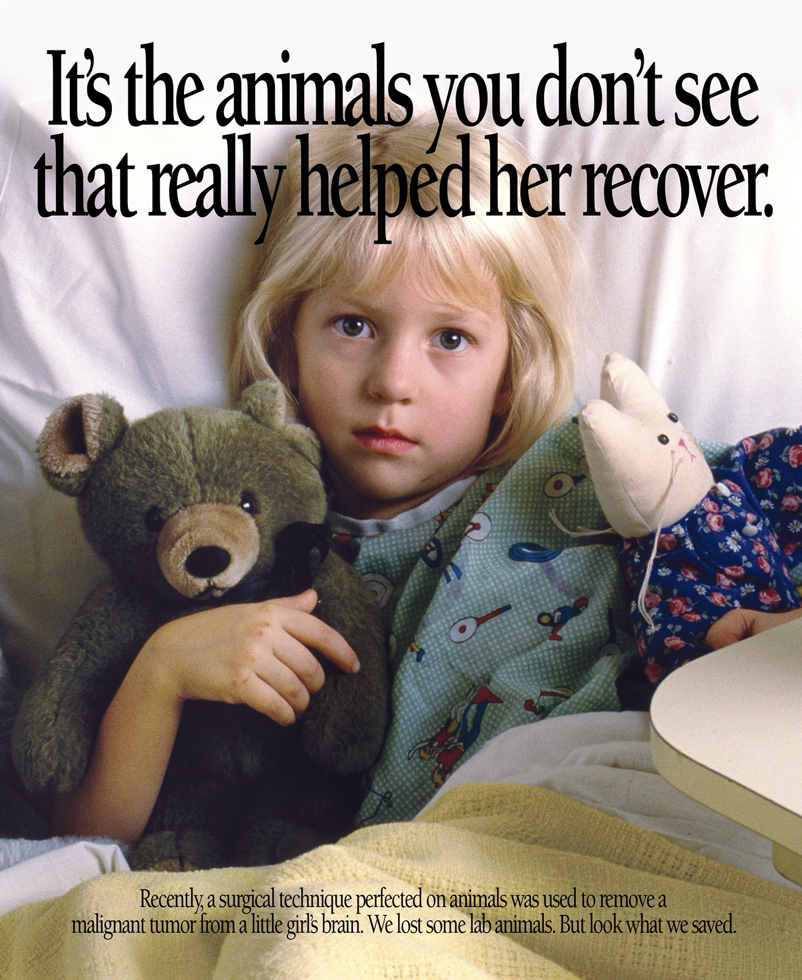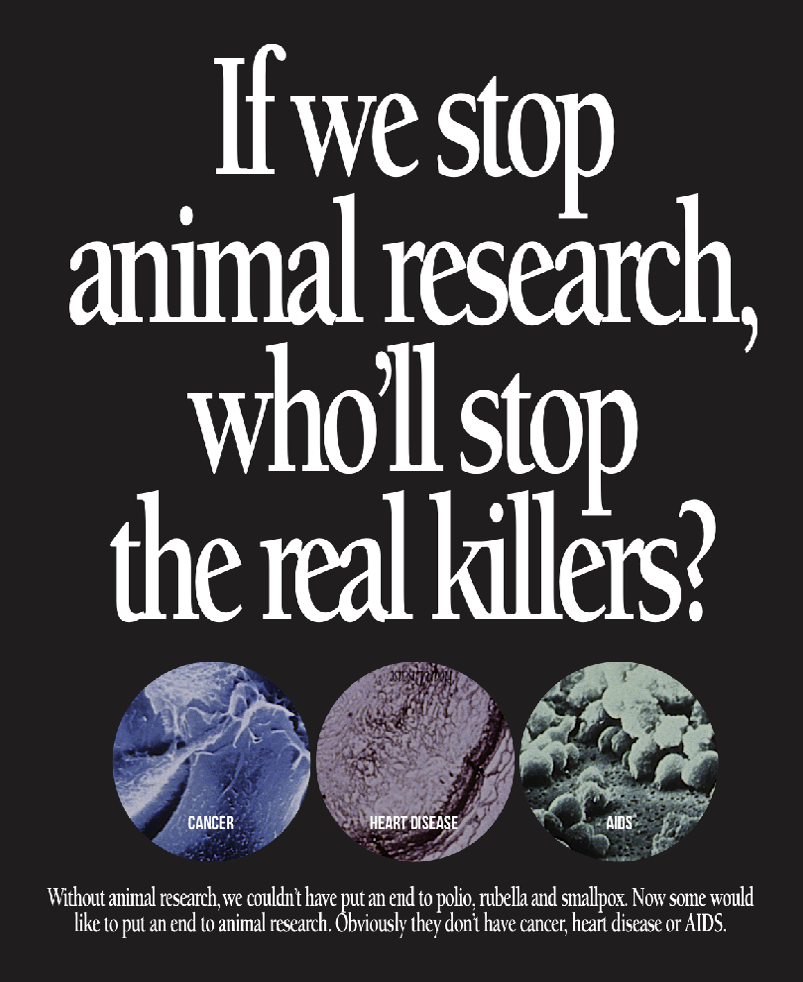New York Times article by Richard W. Stevenson reprinted with permission
David Wojdyla (JSYK THAT’S MY BOSS!) was flipping through a newspaper last year when he came across a Reader’s Digest advertisement reprinting an article about the use of animals in medical research. After years of hearing from animal-rights activists about the abuses suffered by laboratory animals in the name of science, Mr. Wojdyla was struck by information in the article about how essential animal experiments are to medical advances.
The article led him to call Frankie Trull, president of the Foundation for Biomedical Research, a nonprofit foundation based in Washington. The foundation was set up several years ago to provide a view counter to that of animal-rights groups that have become increasingly active in protesting what they contend is cruel treatment of laboratory animals.
Mr. Wojdyla, an art director at Bozell, Jacobs, Kenyon & Eckhardt in New York, offered to help the foundation publicize what it sees as the other side of the story. The result is a new advertising campaign, created at no charge that intends to show the medical advances made through experiments that researchers say can only be done on animals.
The agency created three print ads for the foundation, and they are sure to be controversial. The first shows a picture of animal-rights protesters behind police barricades carrying signs condemning the use of animals in research. The headline reads: “Thanks to animal research, they’ll be able to protest 20.8 years longer.” The ad goes on to say that research involving animals has helped increase life expectancies greatly during this century.
The second ad shows a little girl in bed with a teddy bear and a stuffed kitten doll. “It’s the animals you don’t see that really helped her recover,” the headline says. The rest of the ad says that research using animals helped doctors learn to remove malignant brain tumors like the one the girl had. “We lost some lab animals, but look what we saved,” the ad concludes.
The last ad says, “If we stop animal research, who will stop the real killers?” It shows views, as if through a microscope, of cancer cells, diseased heart tissue and the AIDS virus.
Told about the ads yesterday, Alexander F. Pacheco, the chairman of People for the Ethical Treatment of Animals, one of the largest animal-rights groups, said the foundation was now showing its true colors.
“They’ve always accused the humane community of being emotional and irrational,” Mr. Pacheco said. “They’ve always had difficulty defending their positions based on facts, and instead they’re now using emotional appeals.’”
But Ms. Trull, Mr. Wojdyla and his colleagues at Bozell Jacobs who created the ads said they were simply presenting more information about an issue in which positions are not as clear-cut as animal-rights groups suggest.
“The pendulum had swung too far to one side on this issue,” said Ron Anderson, the chief creative officer at Bozell, Jacobs. “We want to bring it back to the middle.”
Bozell Jacobs has long encouraged its employees to donate time to create advertising for what they think are worthwhile causes. The agency is working without charge on the Drug Free America campaign and on efforts on behalf of the United Way and the Junior Achievement organization. Mr. Wojdyla worked on the animal ads along with Mr. Anderson, Ron Wachino, a copywriter, and Nancy Moran, a photographer.
The ads are scheduled to appear in the next several weeks in The New York Times, The Wall Street Journal and The Washington Post. In addition, they will be distributed through the biomedical foundation to affiliated groups, to run in local publications. If the response is good, the foundation may budget more money to run the ads regularly.
“The purpose of the ads is to pique the public’s interest and allow them a chance to get more information,” Ms. Trull said. “But I’m excited not only because it gets the message to the public, but because it will be a morale boost for the research community.”
NOTE FROM SUSAN: My boss won multiple awards for this campaign. Today it lives at the Smithsonian National Museum of American History.
BTW to leave a comment or share on social, scroll down (past the butt-ugly ads created by Outbrain and making money for WordPress).


